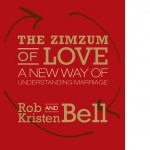As part of Patheos’ Easter coverage, we’re imagining what it would be like to witness the Resurrection. This is my contribution. For more ‘accounts’ and other resources for Holy Week, visit the Patheos Engaging Easter page here.

There are four phases to lectio. Use this sequence of steps or modify it as you see fit. This is a tried-and-true ancient practice with a lot of wisdom in it, but it’s here to help you, not control you.
- Sit in a quiet place where you won’t be distracted and can close your eyes for extended periods. (You can also do this in groups.) I usually caution that when eyes are closed while meditating it’s easy for the mind to start imagining things visually, but that’s exactly what we want here.
- Choose one of the resurrection narratives: John 20:1-18, Luke 23:55 – 24:1-12, Mark 16:1-8, Matthew 28:1-10. Each highlights different features of the story, and some of the characters vary. In Mark and Luke, only angels are present; while in John and Matthew, Jesus is there. In all four, Mary Magdalene, with or without other women, is the first to whom the truth is revealed, though in Luke and John, men play a role too. Pick the one that resonates with you most. If you have no preference, use the account in John.
- Begin with an opening prayer to set your intention: to gain closeness to God and better understanding of the Word. For practices like this, I like the set-aside prayer: God, please help me set aside everything I think I know about these words, myself and you. Give me an open mind that I may have a new experience of these things.
- Lectio: Slowly read through the gospel account. Sit in silence for several minutes. (If you can, set a timer so you don’t have to think about how much time has gone by.) Notice if any detail of the story, a physical detail or a descriptive word, stands out to you after reading.
- Read the passage again. (If you are doing this in a group setting, one person can read and everyone else can close their eyes through this and the next steps.) As you read it, notice the detail or wording which stood out to you the first time. Also, and here’s where we diverge from regular lectio divina, notice particularly anything about physical sensations — the blinding light of the angels, the shaking of the earth when the stone is rolled away. Read it through slowly, taking it all in.
- Meditatio: Now, with your eyes closed, imagine yourself there, by the tomb. You can pick one of the characters in the story if you’re drawn to them, or imagine yourself as a bystander, an invisible witness of this miraculous event. (Each is powerful in a different way.) Picture it. Fill in sensory details which are consistent with the story. Feel the breeze on your face. Imagine the damp of the garden at dawn. The chirping birds. The early morning light.
- Progress in your imagination through the story. While you “watch,” recall the passage, the key actions and the details which might have stood out to you in the lectio phase. If you’ve chosen to make yourself one of the players in the scene, such as Mary Magdalene, imagine yourself experiencing what they experienced, speaking to the angels or Jesus, and being spoken to. If you chose to be a witness, imagine yourself in the midst of the action (not off at a distance), turning to the different characters as they speak or take action. It’s happening all around you. And when Jesus or an angel is present, imagine the sensory experience of being in their presence.
- Oratio: Now, pray in a way that makes sense in response to whatever came up while you were imaging yourself in the scene. Did you realize you need help in some way? Ask for help. Did you have an insight into your life? Thank God for the insight and ask for help bringing your realization into practice. Were you overwhelmed with some feeling or emotion, or did the exercise stir up some deep hurt or joy? Lay yourself bare before God with all your emotions as they are. If you are filled with gratitude, just pray, “Thank you.”
- Contemplatio: When you’re done praying, don’t just leap up and go back to your day. Sit in silence for a while. In the centering prayer tradition, we call this “resting in God.” You’ve already done the reading and visualizing and praying; now just let it all soak in. Don’t try to think about anything. But don’t try to not think about anything either! Just sit. If you have limited time, set a timer so you won’t be distracted by wondering if the time is up. If not, just sit for at least 3 minutes and as much as 20 or 30. End with a closing prayer, or simply, “Amen.”
This kind of imaginative contemplative reading is a great way to approach scripture from a new angle, and as I said, it is all the more useful for those stories we think we know. Even if you don’t think you have a strong visual imagination, give it a try. I don’t; I have trouble conjuring whole visual scenes, but I can imagine sensations and enter the story that way — it surprises and delights me every time.
You can see all my Lent and Easter pieces together at patheos.com/blogs/philfoxrose/tag/lent/. Please share that link, or one to my blog, with anyone you think might be interested. Thanks!














